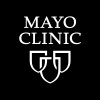
Remote Ischemic Preconditioning With Postconditioning in Heart Transplantation Surgery
Myocardial Ischemic Reperfusion InjuryEnd Stage Heart Disease2 moreThe purpose of this study is to determine whether remote ischemic preconditioning with postconditioning (RIPC+RIPostC) reduces myocardial injury and improves clinical outcomes in heart transplantation surgery.

Effect of Desflurane on Cardiac Function During Cardiac Surgery: Tissue Doppler Imaging of Mitral...
Valvular Heart DiseaseThe purpose of this study is to determine desflurane's dose-dependent effect on left ventricular (LV) function in cardiac surgery. The change of tissue Doppler imaging (TDI) of lateral mitral valve annular velocity at three different desflurane concentrations would be analyzed by using intraoperative transesophageal echocardiography (TEE) in cardiac surgery patients

The Effect on Fluid Balance After Cardiac Surgery After Use of Two Different Priming Protocols
Coronary Heart Disease"The impact on fluid loading after cardiac surgery by use of two different priming solution" Fluid overloading with oedema formation is a regular finding following on-pump cardiac surgery and may contribute to postoperative organ dysfunction. Myocardial oedema has been reported to impair both systolic and diastolic function. An association between intraoperative fluid loading and postoperative adverse outcome has been demonstrated in cardiac patients. The investigators have experience with the use of both colloides and combination fluids (hypertonic saline/colloides) in several experimental studies (pigs). In one animal study the investigators used colloides as an additive to the CPB-prime. The investigators observed reduced fluid leakage and less total tissue water in several organs. The planned study includes patients scheduled for coronary artery bypass, and who have no co-morbidity. The patients will be randomized to receive either Tetraspan® (HES) or acetated Ringer's solution in the CPB-prime. Accurate accounts of fluid additions, blood loss and diuresis will be kept. Determination of cardiac output (C.O.), intrathoracic blood volume (ITBV), extravascular lung water (EVLW) and global end diastolic volume (GEDV) will be monitored by use of the transpulmonary thermodilution technique PiCCO®plus system.

Antiplatelet Activity of Aspirin in Infants After Aortopulmonary and Cavopulmonary Shunts
Congenital Heart DiseaseBackground: Blood clots cause poor outcomes, including death, in babies with heart defects that require a surgical connection ("shunt") to provide blood flow to their lungs. Aspirin (ASA) blocks the part of the blood that helps clots form (platelets). Aspirin is used in babies with shunts to prevent blood clots. The dose of aspirin given to babies is based on adult research. Because babies are different from adults, the investigators do not know if the dose is enough to block platelets, or if it is too much and may cause bleeding. The investigators can test the platelets using a blood test called Thromboelastography with Platelet Mapping (TEG-PM). This test needs a small amount of blood so it can be used in babies. Hypothesis and Specific Aims: The investigators suspect the aspirin doses typically given babies are not enough to block platelets and prevent blood clots in their shunts. The investigators want to determine the percentage of babies whose platelets are not blocked enough (< 70% inhibition), by using TEG-PM. The investigators also want to determine how often bleeding or clots occur in babies receiving aspirin.

Study on Clinical Prognosis, Risk Factors and Genetic Basis of Congenital Heart Disease
Congenital Heart DiseaseThe objective of this study is to investigate the effect of parental peri-natal environmental risk factors and genetic factors on the development of Congenital Heart Disease (CHD). Our hypothesis is that the distributions of some environmental and genetic risk factors significantly differ between neonates with and without CHD.

NIRS Predict Low Cardiac Output State in Neonates and Infants in Cardiac Surgery
Congenital Heart DiseaseNeonates and infants that have cardiac surgery with cardiopulmonary bypass (CPB) for congenital heart disease are at great risk for experiencing life-threatening low cardiac output syndrome (LCOS) in the first 24 hours after surgery. The poor perfusion and inadequate oxygen delivery that occurs may result in multiple organ failure and death. It is LCOS that is responsible for the majority of early postoperative deaths in this population of neonates and infants. Improved pediatric probes placed in peripheral locations using near infrared spectroscopy (NIRS) may permit continuous monitoring of venous saturations reflecting overall perfusion and oxygen balance in the tissues. Following parental or guardian consent, 30 neonates and infants scheduled to undergo surgery for congenital heart disease will be enrolled. At the end of surgery, four EQUANOX Advance 8004CB probes will be placed on the flank, lower extremities and the forehead. Continuous NIRS saturations will be monitored and stored for analysis. Point of care (POC) lactates will be obtained after admission to the intensive care unit (ICU) every 2 hours for the first 24 hours postoperatively, then once at 48 hours. The association between NIRS oxygen saturation and POC lactate values will be assessed using mixed linear models taking into account the repeated measures design. Exploratory analyses will be performed to assess whether NIRS oxygen saturation is associated with outcomes such as days in ICU, adverse events and mortality. The ability to use noninvasive, continuous monitoring for overall perfusion and cardiac output will allow better and earlier therapy for neonates and infants following cardiac surgery.

Lumax DX / Linox DX Evaluation
Cardiac DiseaseThe objective of this study is to investigate the safety and efficacy of the Lumax DX / Linox DX system. No hypothesis has been defined.

Urine and Serum Biomarkers for Early Detection of Acute Kidney Injury
Congenital Heart DiseaseThe purpose of this study is to find out whether a combination of new urine tests and blood tests can show kidney injury in its early stages, before kidney failure sets in. If the investigators find new tests that show kidney injury in early stages, the investigators hope to start treating people with kidney injury earlier, to prevent kidney failure. You/your child are at higher risk for kidney injury and kidney failure than most other people, because of having operations with cardiopulmonary bypass (a machine that pumps your/your child's blood during the operation). This research is being done because there are no tests yet proven to show kidney injury before it leads to kidney failure. The urine and blood tests the investigators are studying have each been shown to indicate some degree of kidney injury in certain people, but not with the accuracy needed to diagnose disease. The investigators think that the combination of urine and blood tests being tried in this research study may provide enough information to better diagnose kidney injury at an earlier stage. About 20 persons over 2 years old up to adults will take part in this study. All will be from the Herma Heart Center of Children's Hospital of Wisconsin.

Comparison of the Cost-Effectiveness of Coronary CT Angiography Versus Myocardial SPECT in Patients...
Chest PainCoronary Heart Disease RiskThe investigators aim to compare the cost-effectiveness of CCTA and myocardial SPECT in patients with intermediate pre-test probability of CHD. To this end, patients with intermediate pre-test probability of CHD will be randomized 1:1 to either CCTA and myocardial SPECT. The patients will be analyzed for cost and also, for outcome.

Improving Monitoring of Patients Receiving Case Management
Multiple ConditionsCoronary Heart Disease3 moreThe UK population is ageing and the likelihood of having a long term health condition increases with age. Three out of every five people over 60 in the UK have a long term condition. Ageing and having a long term condition increases the chance of having difficulty being independent and carrying out day to day activities. In recent years the NHS has made a greater effort to prevent these difficulties in patients with long term conditions. One approach to help patients with long term conditions is case management, where by (usually) a community matron visits patients at home, looking for early warning signs of any worsening of their condition and arranging care and treatment. But the current way this is done varies across the country and hospital admissions are still rising. In order to give the right care at the right time, effective monitoring is needed to help the community matron detect and act on changes in the patient's condition. Loss of muscle strength in old age is linked to a poor health, but it is not known whether simple measures of muscle strength could be used to detect and predict declines in health in the short to medium term to help maintain independence and prevent an accident or hospital admission. The aim of this study is to look at whether monitoring muscle strength in case managed patients is practical, acceptable and useful in detecting when a patient's condition worsens. Each patient will be visited by the researcher in their home twice in the first week, then once every two weeks, for another 5 weeks, to carry out three simple measures of grip and respiratory strength, and complete questionnaires about their health and ability to carry out day to day activities. Each visit will last about 20 to 30 minutes. A small group of clinicians will be asked about their views of the strength measures. Database analysis will allow descriptive data on the patient group to be gathered and analysed.
